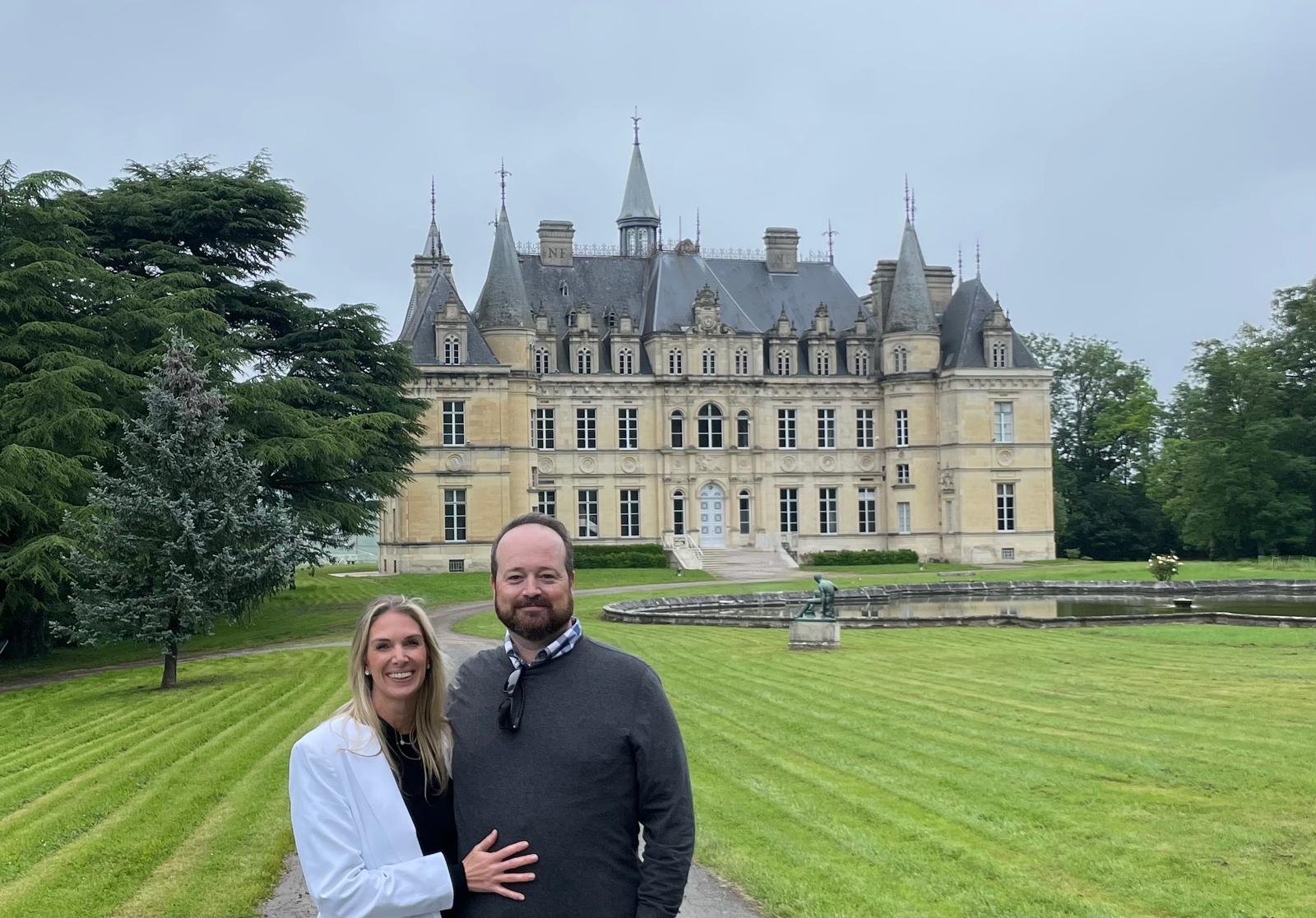France: Epernay | Champagne
Road Sign of Champagne and Vineyards
Hello Champagne! Swoon. It was hard to leave such a beautiful region of France with so many delicious champagnes to drink. The weather wasn’t the best, and according to all the locals it was unusually wet and cold for this time of year, which isn't good for the grapes. Only time will tell how the 2024 vintage will turn out. Fingers crossed.
One of the main themes of the entire trip to France is—Patience. Almost every person, especially those working for the wineries, all spoke about patience. On an annual basis, patience is always key for any wine making region, but especially in Champagne because making sparkling wines is one of the few winemaking processes in which you are able to blend not only grape varietals, plots and barrel/stainless steel fermented wine, but most of the producers keep what is called the Perpetual Reserve. This is a large tank in which they keep 20-30+ years’ of champagne as a means of blending the vintages to become the non-vintage bottling. We loved the way our host at Henri Guraud described it, “We add the new vintage wines to the perpetual reserve where the old grapes teach the young grapes how to behave.” Wisdom beats youth every time.
As we travel, we are both learning to slow things down and have patience as we learn and grow during this sabbatical. The pace and grind of life in the United States has definitely taken its toll on us and we are exploring the world, looking for that old wisdom to teach us better ways of doing things.
Les Gallais: A Highlight
Les Gallais was a unique property. It was actually purchased in the 19th century by Madame Veuve Cliquot (yes, the yellow label one!), where in 1843 she chose to build a “small” vacation home where she also hosted friends to stay when they were visiting—known as the Chateau de Boursault. To call it a vacation home is just silly. It’s a giant castle!
The home was purchased by the current family who operates the winery, Les Gallais, in 1927. It was used as a hospital during the second world war and has remained vacant ever since. While it looks beautiful from the outside, it is currently undergoing massive renovations inside to become habitable once again. Likely to be used as an event venue, hotel or some other experiential locale.
Despite its grand history, what really struck us was the unassuming nature of the people we came across here and the simple, straightforward, delicious wines they were producing.
Things We Learned
On every bottle there are designations (to varying degrees of specificity) describing details about the wine. In Champagne, the most common thing to see are terms like Brut/Extra Brut, Dry/Extra Dry or Demi Sec (there are others). This is important info telling you how much sugar has been added to the wine during the fermentation process. Demi Sec will have the most sugar added and therefore will be the most sweet. Don’t be fooled by the Dry/Extra Dry designation as there are still somewhere between 12 and 30 grams of sugar added per liter of wine. We don’t have much taste for sweet anything, so our preference lies in the Extra Brut (3-6g/L) or Brut (6-12g/L).
There are 320 “Cru” designated villages around the region, but only 17 are designated “Grand Cru”—selected as the best of the best in the late 19th century. This means that all of the grapes in that bottle need to come from within the borders of one of these villages.
There are three core grape varietals used in Champagne specifically—Pinot Noir, Chardonnay and Pinot Munier—any decent producer should have the percentage of each grape used in the blend on the label.
If the producer is very good, you may also find more specific information like which plot, harvest date and so on. Details are important. If they don’t show many details on the bottle, buyer beware!
Itinerary
Day One:
Tasting: Henri Giraud
Tour through Hautvillers and the church where Dom Pierre Perigon is buried
Tasting: La Maison Penet
Tasting: Mailly
Jeremy and Valerie at Henri Giraud
The only thing better than a Champagne tasting is one with a cat!
Day Two:
Tasting: Champagne Le Gallais
Tasting: Pierre Jouet
Tasting: Gaston Chiquet
Tasting: Voirin Jumel
Cellar at Champagne Le Gallais
Tips for Epernay | Champagne:
Hire a guide. If you want to taste you need a reservation and they can be hard to get on your own. If you need a guide, we had the best driver/guide. Martin was amazing with his knowledge of the area, champagne, and all things France.
We drank a lot of champagne and we still just scratched the surface of champagne tasting in Champagne. We would happily go back and do another few days of tasting and exploring the region.
Plan to dress up a bit when tasting in this region. Smart casual is the best way to go with good shoes to walk through vineyards.
Our AWESOME guide Martin (top right corner with us)!
That is a snapshot of our time in Epernay and the Champagne region of France. Cheers to a wonderful experience in the region.
Now…Where To Next?







